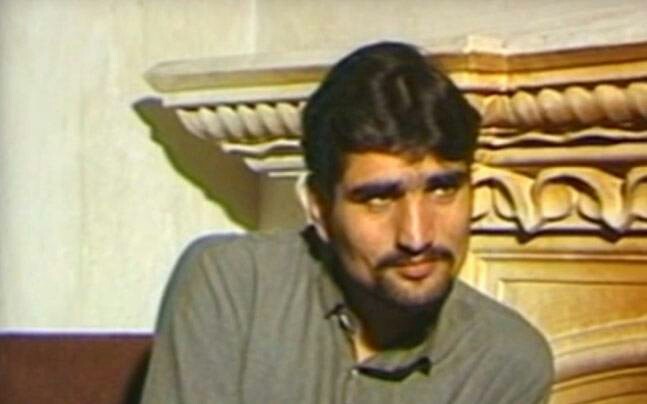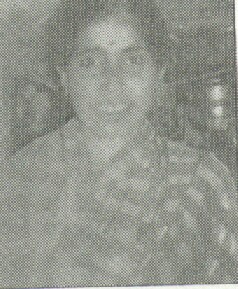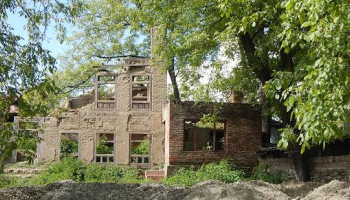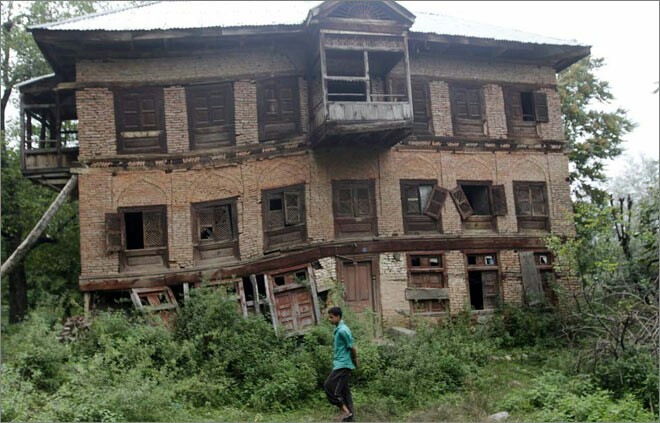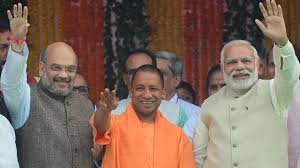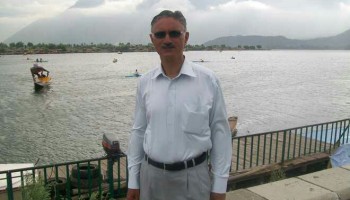'The Women’s Self Defence Corps, Srinagar 1947-48: A Conversation with Kanta Wazir' - by Rekha Wazir
12/14/2019
9 Comments
Kanta Wazir (née Zutshi) was born in Srinagar in March 1930. She married Man Mohan Wazir (1926-2018), an IPS officer of the Jammu & Kashmir cadre, in July 1949. They lived in Srinagar till early 1990, after which they moved to Delhi. On 25th May 2019, towards the end of my stay in India, my mother, Kanta Wazir, mentioned out of the blue that she had been a member of the Women’s Self Defence Corps (WSDC) when she was a student in Sri Pratap Singh College in Srinagar in 1947-48, and had learnt how to fire a rifle. She said she was good at it too and had received a prize from Ghulam Mohammad Sadiq - many years later the Chief Minister of Jammu & Kashmir - because three of the five shots she fired, when he came to inspect, hit the target! She said all this very casually, at the end of a long conversation I had had with her about growing up in Kashmir. I was most surprised to hear this as she had never mentioned it before, and I made a mental note to ask her more about it on my next visit. She is almost 90 and was getting a bit tired of my questions so I had to stop at that point. Fast forward a few months to 4th September. During my daily phone call, my mother mentioned that her cousin Jai Kishori Bhan (née Vaishnavi), whom we called Jaya Masi, had passed away a few months earlier, and so we talked about her for a bit. My mother has a tendency to give me bad news with a lag! Just a few hours later, while doing a google search for something else, I came across Andrew Whitehead’s fascinating blogs and saw his informative and intriguing piece, with vintage photographs and other hitherto forgotten, and fresh, materials on the WSDC. I was taken aback to see Jaya Masi, about whom I had been talking just a short while earlier, in one of the photographs of the militia. She was standing right in front, with a rifle on her shoulders, leading the march! I recognized a few other names and faces as well. Andrew had included the information and insights of Krishna Misri, also a member of the WSDC, who had been able to identify some of the women. Of course, I called my mother immediately and told her about the photographs of the WSDC on the blog, which set her off on a chain of reminiscences. Here is the free-flowing conversation that I recorded with my mother on Friday, 15th November 2019 about her participation in the WSDC. My questions were in Hindi and English and her responses were mainly in Hindi with some English and Kashmiri thrown in. She added some more thoughts in subsequent phone calls and conversations, and these have been incorporated in what follows: RW: You told me on my last visit that you had received rifle training when you were a student in S.P. College. Are you familiar with the name Women’s Self Defence Corps? KW: Yes, of course. RW: Can you tell me why you joined the militia. Who told you about it? How old were you? KW: I was in college, in second year FA (Fellow of Arts, a two-year degree after Class 10) , that means I must have been 17 or 18 years old. I got married in 1949 at the age of 19 and that was after completing FA. I knew about the militia; there was talk about it in every street and lane (gali gali mein baat thi), but I went through my college (SP College). We were told about it by our professors and were encouraged to join if we wanted to. They said it was very good work, that we should be prepared for the sake of our country (mulk, meaning Kashmir). A group of us college students used to go for the training. RW: What was being said in every street and lane – gali gali mein? KW: That started when the ‘Kabailis’ were sent by Pakistan. They wreaked havoc up to Baramulla – the women who had been raped/molested were arriving in Srinagar and we were given the job of looking after them in the Government Hospital. We were taught first aid and sent in batches to the hospital. Only the girls who wanted to go. The women were in a very bad state – we would go in groups of five to seven – Girija Dhar was there, I was there, and there were a few others from our neighbourhood and we used to go together. We would ask the women what they had gone through, offer them support. We were encouraged to learn how to counsel these women. [The incursion of tribal invaders from the North West Frontier Province, now part of Pakistan, in October 1947 is known popularly as the Kabaili raid - RW] RW: Were the women affected by the Kabailis Muslim or Hindu? KW: They were from all communities, but the majority were Hindu and Sikh. RW: Was it a mixed group of Hindu and Muslim girls that used to go to the hospital? KW: Yes. It all started during this period. We first started going to the hospital to counsel the women. They were very young – there were some older women as well, but the majority were very young – they had been raped, beaten – the Sikh girls were worse off than the Hindus. The rallying cry of the Kabailis was “Sardaron ka sar, Hinduon ka zar” – meaning “take heads of/off Sikhs and wealth of/off Hindus”. This was during the Kabaili raid, the same time that the British nun was raped in St. Joseph’s Convent in Baramulla. She had two gold teeth – they pulled those out as well. At that time the entire community – Hindus, Muslims and Sikhs – was outraged by what the Kabailis had done. I don’t recall hearing anyone – among my personal contacts, in my college group, or in my mohalla - supporting them or even keeping quiet about them. Everyone was together in solidarity in face of the rape and pillage that took place. They would see the young girls and women who had been affected. Nobody was happy or supportive of what had happened. Kashmir was in a mess at that time. RW: How did this lead to the militia? KW: We were told in college by the principal and our professors that they had arranged for the girls to get trained in firing a 303 rifle. Any girl who wanted to join could do so. There was an examination of sorts at the end. Sadiq Sahib was there for that. I was the only girl who hit the target three times out of five and I received a prize for it from him. Another girl got the overall first prize and I got the second. But we didn’t care about prizes at that time. RW: Did boys go for training as well? KW: No. The training was only for girls. RW: Did boys have a separate group? KW: I don’t know about that. I don’t know if they were trained in anything. This training was just for girls so that they could at least protect and save themselves. Sadiq sahib used to come. Mehmooda used to be there. I’m sure she played a part in setting up this group. [Mehmooda Ali Shah, popularly known as Miss Mehmooda, was a leading educationist, social activist and advocate for women’s education and empowerment - RW] RW: Mehmooda couldn’t have been in college at that time. KW: She was not in college, but she was very actively involved in such work. A group of girls used to go for training from college and then go back to their respective homes when it was over. I may not have got permission from my family had it meant going alone from home. Before that, when the Kabailis came up to Baramulla and word reached Srinagar about it, there used to be groups of citizens shouting slogans all night even in our mohalla (Safakadal) which was mainly Muslim – there was no other Hindu house apart from ours and the Dhars’ who were a bit further away from us. We were the only two Hindu families in Safakadal – our house was on the riverbank and they were further in, near Idgah, where the Id namaz used to take place. The whole night, groups of people would patrol the streets and lanes proclaiming “Hamlawaro khabardar, ham Kashmiri hain taiyyar” (Aggressors beware, we Kashmiris are ready). We would hear the slogans till midnight, which means they were patrolling the interior of the city as well, not just the main roads. We were two lanes in from the main road. Your father was also part of a patrol at that time – I don’t remember if it was as part of the regular police patrol or the citizen’s patrol – but he would shout out extra loud outside my house, just to let me know that he was there! RW: Was it a mixed group of Hindus and Muslims that went for rifle training from the college? KW: There were more Hindu girls for the simple reason that there were fewer Muslim girls in college at that time – they were only a handful. The Muslim girls who attended college would come up to the gate wearing their burqa and would remove it as soon as they entered. It was a co-educational college, and this could have been another reason why there were fewer Muslim girls. Hindu girls were over-represented, given their percentage in the population. RW: How many girls went for the training from college? KW: Must have been 10-15 girls. There were other non-college going girls as well – probably those that had joined from their mohallas (neighbourhoods). But I think that hardly any non-college going Muslim girls would have been able to join the militia. In college they were supported by the fact that we went as a group and they must have been spurred on by each other. RW: So, what did you do in the WSDC? KW: We were taught about counselling the women victims of the Kabaili raid in the hospital, keep track of what the doctors were telling them; learn about rehabilitation – would they go back/live in tents/would the government give them places to stay? If normalcy returned to towns of Uri and Baramulla, would they want to go back? Some of the women were traumatized – they didn’t want to go back. At that time, it was just a question of helping them with their mental trauma. We were taught first aid. Counselling victims was voluntary – you could opt out if your parents didn’t allow you to go to the hospital. But we were encouraged to go because most of the victims were in the same age group as us and we would be able to communicate with them. So, a lot of girls would go. RW: Are you proud of the training that you received? KW: Yes, of course. When you hold a rifle you feel good about yourself. We used to talk about it all the time, that we knew how to fire a rifle even though we didn’t have a license. If I had applied for a license at that time, I would have got it. There is no doubt that there was excitement about this. You feel that you are also important, that you are also capable of doing something. You can protect yourself. You can help the women who are in the hospital, show them solidarity. I think women played a very important role at that time. The carnage wreaked by the Kabailis came within reach of our homes in Srinagar. For example, my house was just 45 minutes away by tonga – there were hardly any cars at that time – from the spot where they had reached. People were hiding their daughters. RW: Wasn’t this a novel thing for girls to be doing in those times? KW: Not for the girls who were already in college. Our parents had already taken the step to send us to a co-educational college. There were very few girls in the college at that time – it was mostly boys. “The black and white photograph is of members of the Women's Self Defence Corps, a women's militia set up largely by Communist supporters of the National Conference in October-November 1947, when Srinagar was in danger of being overrun by an army of Pakistani tribesmen. Altogether, a very remarkable image - and one which made me think more deeply about the political and social alignments in the Valley as the Kashmir conflict first erupted…. The women's militia drilled and was trained in how to fire a rifle and throw a grenade. Its main intention was to allow young women to protect themselves and their households should Srinagar be overrun. The tribal army got to the outskirts of the city but not further. The women's militia did not see active service, though many of its members were involved in relief work for the refugees resulting from the invasion.” - Andrew Whitehead
RW: Who was behind it? Was it a political move? Was it the National Conference?
KW: National Conference was the main party at that time. Sadiq was a Communist, so was Mehmooda. The situation was such that all parties joined together so you can’t say that it was more National Conference or Communists who were behind this move. The whole population was united. I remember an incident from those days. My older sister, who lived in Kanyakadal, a predominantly Hindu neighbourhood, asked my father to send me to stay with her. She was afraid I wouldn’t be safe in Safakadal in the event of an attack on Srinagar. My father didn’t think it was necessary, but my sister insisted. As I was getting ready to leave the house, the women, all Muslim, of our neighbourhood came to our door - they must have heard that I was leaving – they beat their chests and pulled their hair – they said “how can a girl from your house leave the locality? Are we dead? Let her stay here, she is safe here. Even if the Kabailis come to Srinagar, she is safer with us. Nobody can touch her while we are here.” They didn’t let me go. RW: What was your reason for joining the militia? Was it political? Was it because your supported the National Conference? KW: No. Women had suffered so much, you had to do something. It was more from a spirit of compassion and solidarity and also to learn self-protection. It had nothing to do with politics. RW: Do you know who organized the WSDC? KW: I don’t know who the main organizer might have been. What I do know is that Mehmooda was very prominent. She was there every day, organizing the different groups, telling them what they had to do. And we saw Sadiq there a lot. RW: Who trained you? KW: There was a group of junior doctors who taught us first aid. The organizers had obviously made an arrangement with the hospital to send these doctors to train us. And as far as I can recall, rifle training was given by police staff. Who else would have known how to fire a rifle? They gave us proper rifle training. RW: Was there a lot of fear and apprehension at that time? KW: Yes. People were very afraid in Srinagar. The memory of what had happened in Baramulla was very fresh and raw; families affected by the violence were still trickling in. Nobody harmed anyone in Srinagar, but the real fear was that the Kabailis could come again and this time reach Srinagar. Things were not the same in Jammu, where there was a lot of violence between the communities. My grandfather owned a house in Mastgarh, which was a predominantly Muslim area and my father used to live in that house for the six winter months when the government moved to Jammu. My father had retired by this time but when he went to Jammu next, there was hardly any Muslim family left in that neighbourhood. He couldn’t find any of his acquaintances or the families he knew. Some may have fled the bloodshed; you can only imagine what must have happened to the rest. A lot of Hindus and Sikhs were killed in the Poonch/Rajouri area on the Jammu side. Your father’s first posting after we got married in 1949 was to Poonch. We were invited to a Hindu wedding function in Rajouri once and I was completely shocked to see that more than 50% of the young women attending were dressed in white, they were widows. None of this happened in Kashmir. There was no violence between the communities in Kashmir. RW: Were you keen to get trained to protect yourself? KW: I was very keen to go with all the girls. I was also curious to see what it was all about. They trained us very well. It wasn’t a long course – 15-20 days, and there was provision for having an additional class in the afternoon should the group become unwieldy. It’s easy to fire a pistol to protect yourself, but firing a rifle is more difficult. I discussed this with your father later and he agreed. If you don’t press the trigger properly, or press it suddenly, you can get a jolt and fall with the impact. RW: How long did the WSDC last? KW: We were trained over the course of a month. I think there were two groups of college girls – I was in the first group. I don’t know how long the WSDC lasted. Once our training was complete, we were considered ready, and we resumed our normal college activities. I’ve just remembered – Dr. R.K. Bhan was the Principal of S.P. College at that time. [Dr. Bhan was Kanta Wazir’s uncle, married to her mother’s sister. Jai Kishori Vaishnavi née Bhan was his daughter; and Leela Bhan née Dhar, both in the photograph on Andrew Whitehead’s blog, was his daughter-in-law - RW] RW: Wasn’t Leela Bhan née Dhar already married at that time? She is older than you so she couldn’t have been a college student.How come she is in the militia? KW: She got married long before I did, and she is older than me. I know she wasn’t in college at the same time as me so she must have been one of the women from outside college to get the training. She could have been encouraged by her father-in-law, or by her brother D.P. Dhar [a prominent politician- RW]. RW: Do you remember any stories of camaraderie? Was there a special spirit at that time? KW: Yes. We were very moved and motivated by what had happened to the women. We wanted to do something for them. They had horrendous stories to tell. Only a heartless person would have remained unmoved. Many of us would go home and cry after talking to them. Their situation was very bad – daughters had been raped in front of their mothers, wives in front of their husbands, mothers in front of their sons. Even old women were not spared. It was like the Kabailis were exacting revenge. RW: What were the avenues open to women in those days, apart from teaching? KW: Not many. Kashmir was very backward. There was hardly any education available. Women were mostly confined to the home. RW: What about your generation? What about public life? KW: There were not many avenues. Very few women came out of the house. Even attending college was a huge issue. You were asked a million questions by the extended family. When your aunt (Shanta Bhargava née Wazir) went to study medicine in Delhi [in 1945 - RW], there was a huge furore in the family over the prospect of her having to live alone in a far-off city. This despite the fact that your grandfather was so well educated and did so much work for women’s education. RW: How come you have never talked about your time with the WSDC? Why haven’t you ever told me about your rifle training? KW: I didn’t think it was anything remarkable or worth talking about. I had no idea there would be photographs of the women’s militia or that anyone had written anything about it till you showed me Andrew Whitehead’s piece on this on his blog. What we were doing seemed normal in the mood of the times. If nothing, you could at least protect yourself. It was exciting, something new, we were standing shoulder to shoulder with men. It gave us a buzz at that age. We would tell any boy who bothered us in college – and they used to do that a lot – to beware, because we could now use a rifle! Your father knew about it, of course. I would sometimes tell him that he was not the only one who knew how to fire a rifle, I did too. RW: Are you aware of Sheikh Abdullah’s Naya Kashmir manifesto? Did you know that it covered land reform, women’s rights, etc. KS: Yes. I’m aware of it but I don’t know everything that the document contained. Land reform was the first thing that Sheikh Abdullah implemented when he came to power. My family held lands, and lost considerably, but my personal view is that the land reform was a very good thing. The tenants who had been long exploited finally got something. You would have to be very selfish to say it wasn’t a progressive move. I don’t know what else was in the manifesto. RW: Were you aware of Freda Bedi and her husband? She was a British woman who wore Indian dress. Do you know of her role in setting up the WSDC? Do you remember seeing her during your training sessions? KW: She may have played a role. It’s not impossible that she did, but I have no recollection of seeing any non-Kashmiri person during our training sessions. Maybe she was higher up. I am only aware of the people who were involved with the group that went from my college but there were other girls who received the training as well. In our group Mehmooda was the most important and prominent person. She was the leader as far as I was concerned. She was quite a woman – well educated, intelligent, beautiful, very self-aware and elegantly turned out – always in a saree. RW: Do you remember Prem Nath Bazaz? KW: Yes. He was a communist. His daughter Gauri studied medicine with your aunt Shanta. RW: Tell me the slogans that people used to shout those days. KW: One was: “Sher-e-Kashmir ka kya irshad, Hindu, Muslim, Sikh itihad” (‘What is Sher-e-Kashmir’s order?’ In response the crowd would say: ‘Hindu, Muslim, Sikh are united!’) There used to be huge processions in those days with large crowds of people shouting this slogan. The second slogan I’ve told you already: “Hamlawaro khabardar, hum Kashmiri hain taiyyar”. RW: Were there any slogans in Kashmiri? KW: The slogans were mostly in Urdu, so that everyone else could understand what we Kashmiris were saying. RW: What were your own personal politics? National Conference or Congress? KW: What did we have to do with the Congress in Kashmir, I was with our own National Conference. It was a good party at that time. The problems started later. It was during this period that Mahatma Gandhi came to Kashmir. I went with my father to hear him. I don’t remember what year it was, but you can find that out easily from the internet. It was his first and only visit to Kashmir. It was after the bloodshed of Partition that took place in North India and Bengal. He came to Kashmir on his way back from visiting these places to see what was happening here. My father had managed with great difficulty to get three passes for the public meeting - for himself, my brother and me. God knows how we reached the ground where the meeting was being held – there wasn’t an inch of space anywhere in Srinagar – I can’t tell you how many people were milling around the streets. I have never in my life seen such large crowds in Srinagar. It felt as though all of Kashmir was there – not just Hindus – everyone – people wanted to hear what he had to say. I’ll never forget what he said. He spoke in Hindi and he started by saying that for the first time he could see a beacon of light in India. He could see a ray of hope in Kashmir.This was because Kashmir was one of the few places where there was peace and there had been no bloodshed. He received a grand welcome in Kashmir. People felt jubilant to have seen him. The two girls who always accompanied him were with him. RW: Were there any special slogans to welcome Gandhi? KW: No. Just the usual Mahatma Gandhi Zindabad. The slogan that was specially coined after the Kabaili raid was “Hamlawaro khabardar ….” Every time an aeroplane flew overhead in those days – even if was one of our own – people would start shouting this slogan! [Mahatma Gandhi made his first and only visit to Kashmir in the first week of August 1947 - RW]
Let me start with a story of adventure, so nearly of misadventure. Late in the summer of 1921, my grandfather, Tara Chand Wazir (henceforth TCW), then a young man of 28 and working in the Sericulture Department in Jammu & Kashmir State, was on his way back from a tour of Europe where he had been sent on deputation to study different aspects of the silk industry. He took the steamship Paul Lecat from Marseille, and after a few days of rough sailing during which the passengers were confined to their cabins, they stopped at Djibouti for a few hours to refuel and deliver mail. The ship anchored a few miles from the shore because the sea near the coast was shallow. The passengers on board made up a motley lot - two Indians, including TCW, a Frenchman, a Greek, and a Swiss. Most of them had been pretty seasick on the journey and were eager to stand on solid ground for a short while. They took the opportunity provided by this stop and engaged a local boat to take them ashore. Two local men paddled the boat, front and back, and it was lit by a hurricane lamp as it had begun to get quite dark. A most intriguing incident followed, best told in the words of TCW [1]: “When we were halfway between the ship and the shore, we suddenly saw a motorboat coming in exactly in transverse line - a few seconds and it would take our low African boat under it. Biscoeism in my blood asserted itself and used to boating as I had been in school days, I thought of saving the boat from the tragedy which was imminent. So, I stood up, tried to catch the external gunmetal bar running alongside the motor launch and with the manoeuvring of the feet put our boat in a position parallel to the launch so that the tragedy of drowning could be averted. The bar was polished and greased and I was heavy with my long boots, khaki drill suit with closed collar, Jodhpur-type breaches and evening cap. The watch I had purchased at Marseilles with mother of pearl casing was on my wrist. The momentum of the launch carried me off my boat after it had become parallel with the launch through the manoeuvring of the feet. I thus hung by the bar. The weight of my body and the clothes etc. could not long sustain me in that hanging position, when the grease on the bar did the trick and I fell down. I went vertically down into the sea, and while going down I felt all along that this was the end of my life, that now what would happen would be that the tragedy would be reported in papers. It would cause consternation in my family and all my hopes and aspirations would die with me. Above all, I thought about my old parents, my wife and my elder brother. By this time my feet touched the bottom of the sea and there was a rebound sort of thing and I came to the surface when I cried for help. I was trying to swim when something like a thick rope was thrown towards me by my fellow passengers... I caught hold of it and the friends in the boat picked me up. All that I remember is that I was put in a position where the sea water which I had taken in in plenty was drained out of my body, that my wet clothes were taken off, the Swiss gentleman gave me his own coat to put on and I fell unconscious.” “Next day I woke up in my cabin in the ship, with the surgeon on board feeling my pulse and prescribing some medicine. My clothes were being dried on the deck. They then told me what had happened. When I stood up in the boat to save it, the French gentleman fancied that I was trying to save myself without caring for the safety of others in the boat, quite the reverse of my intention, and took out his revolver from his pant pocket to shoot me down. His neighbour the Swiss gentleman, understood my intention better, held the Frenchman’s hand and prevented him from shooting. In the meanwhile, I had fallen into the sea…The Greek gentleman had received some slight injuries on the nose, and the African boatman was missing presumably on the impact of launch on the front portion of the boat he had fallen into the sea and they told me that when the accident was reported to the boat commissioner, no trace of the African boatman had been found till then … Instead of going to the shore, the boat returned to the steamer, and I was placed in charge of the surgeon in the steamer, who left me to sleep for the night and saw me next morning when I woke to hear the story of this nasty incident. Afterwards when I met the French gentleman, I confirmed the Swiss friend’s interpretation of my movements and intention, and he had the fairness to apologize for the impulsive action he had proposed to take which might easily have proved fatal. This made the visit to Djibouti most memorable for me for it gave me a chance to say that not only had I seen the ‘fair fields and pastures new’ in Europe, but I had also had a glimpse of the bottom of the sea.” What, then, is this ‘Biscoeism’ that TCW refers to? The reader may well wonder! To explain what he meant by it and what it might mean to scores of Kashmiri men, then and now, requires delving, howsoever briefly, into the history of modern education in Kashmir. Kashmir’s fabled beauty had forever been spectacularly visible to travellers, adventurers and merchants – over time increasingly European – who came to escape the heat and dust of the plains, buy shawls, go hunting and trekking, write books, take photographs and paint exquisite scenes. Their sentiments about Kashmir would chime with the Mughal emperor Jahangir’s famous and oft-repeated exclamation, “if there is paradise on earth, it is here, it is here, it is here”. But for the ordinary inhabitants of the Valley, and some sensitive souls who came and stayed, this beauty gently receded into the backdrop, while the foreground that inexorably entered the eye and assaulted the mind was the poverty and wretched conditions in which the majority lived and survived. The Dogra Rajah of Jammu, Gulab Singh, had supported the British in their battles, and subsequent victory, against the Sikhs who then ruled large parts of North India, including Kashmir. As a reward for this favour the colonial regime presented him with the Kashmir Valley in 1846 for the paltry sum of seventy-five lakh Rupees – a fact that still haunts the psyche of most Kashmiris – thus allowing the Rajah to create the State of Jammu & Kashmir as we know it now, and graduate in status from Rajah to Maharajah. The Dogra rulers showed little interest in investing in health, education, infrastructure, indeed in anything that would improve the welfare of their Kashmiri subjects; they concentrated on extracting maximum revenue from agriculture and handicrafts and peasants were drafted in to provide begar or forced labour for which they were not recompensed to carry heavy loads to remote areas like Gilgit and to build roads - to the point of leaving the populace in conditions of poverty and oftentimes near starvation. In this, unfortunately, they were no different from the previous Mughal, Afghan and Sikh regimes. Moorcroft describes the city as he saw it when he came to Kashmir in 1822 towards the end of Sikh rule: “The general condition of the city of Srinagar is that of a confused mass of ill favoured buildings, forming a complicated labyrinth of narrow and dirty lanes, scarcely broad enough for a single cart to pass, badly paved, and having a small gutter in the centre full of filth, banked up on each side by a border of mire …. and the whole presents a striking picture of wretchedness and decay.” Quoted in Khan (1978) p. 16-17. Sir Richard Temple, who visited Srinagar in July 1859, commented on the indifference of the Dogra Maharajah towards his Kashmiri subjects: “I asked (the Maharaja) whether Srinagar city should not be drained and cleaned, and to this he answered, that the people did not appreciate conservancy, and that they would much prefer to be dirty than to be at the trouble of cleaning the place.” quoted in Khan 1978:18. When Cecil Tyndale-Biscoe arrived in the city in 1891, nearly half a century later, to take over as the principal of the Christian Mission School (CMS), not much had changed, and he was shocked by the scene that confronted him: “The day after my arrival, Knowles and I walked through the city … a walk not to be forgotten. I recall what attracted my attention most. The stench, the utter filth of the streets, notwithstanding the thousands of pariah dogs, starving donkeys and cows trying to get a living from this foulness. Most of the houses had thatched roofs. I was astonished to see not a single chimney, and only one house, that of the Governor, had glass windows.” (CT-B 1951, p.21).
Not
surprisingly, malnutrition, infectious diseases and pestilence were
rife, cholera epidemics were endemic, and floods and fires were a
recurrent feature of life, destroying people’s flimsy homes and taking
lives. The streets were too narrow for fire services, such as existed,
to reach these houses, and the wooden structures would burn down very
quickly, leaving families homeless. And yet the Dogra state saw no
reason to set up hospitals or dispensaries nor invest in sewage,
drinking water, drainage or fire services. Being Hindu rulers, they
employed the Kashmiri Pandits, who were literate in Persian, in the
lower rungs of the state bureaucracy. Biscoe reasoned, providing precise
calculations, that their salaries were so low that they were forced to
resort to extortion, what he called “loot”, in order to run a household,
making corruption a necessary fact of life and survival.[2] Senior
government bureaucrats were imported wholesale from Punjab and
elsewhere in British India. There was a rising demand from the Kashmiri
population for more educational institutions that would impart the
qualifications necessary for locals to fill these positions, but these
fell largely on deaf ears.
This was the Kashmir that TCW was born into in 1893. The family had seen better days but were thoroughly impoverished at the time of his birth. His father had recently lost his job, and the great fire of 1892 had destroyed their house along with all its contents. As he recalled, “…when I began to see the light of day, my eyes met with the sight of nothing but remnants of debris in the compound or courtyard of our double-storeyed improvised house with no more than a plank roof to cover it which in inclement weather leaked terribly to our great discomfort.” Opportunities for modern education were all but non-existent, at a time when the rest of British India was much ahead. Traditionally, Pandit boys were taught Sanskrit in pathshalas run by Brahmins, whereas Muslim boys were taught Arabic in maktabs that were linked to mosques. In addition, some Pandits taught Persian to both Hindu and Muslim boys in their homes, in return for a fee. With Persian becoming the court language, this, and some arithmetic, were added to the teaching. By 1872, the state had responded to repeated requests from the community and opened a few schools in Srinagar, but these mirrored the pathshalas and the maktabs. This situation changed dramatically with the arrival of the Christian Mission Society in 1864, in the first instance to set up the first hospital in the city, followed by a school in 1880, both in the face of enormous opposition from the Dogra state. The first Christian Mission School was set up in the premises of the hospital, which had its own building by then, and started with about five students, but within a few years they were allowed to rent their own space and later to construct their own school. The principal of the school for the first ten years was Reverend J.H. Knowles, but it was only with the arrival of Reverend C.E. Tyndale-Biscoe in 1891 that the school took on its distinctive character. Biscoe was appalled by what he saw when he entered the school for the first time. [3] The boys, nearly all 250 of them Pandits at that time, came to school dressed in their pherans – the long, loose garment worn by Kashmiris, many of them holding a kangri (fire pot) under it. They ranged in age, with many of them 20 years or older; and most of them were married and were already fathers. Discipline was lax, there was no uniform, school was supposed to start at 11 a.m. but the students would saunter in till midday; absenteeism was rife, and all manner of religious functions were seen as a ready excuse for skipping school. The boys refused to take part in sports - being Brahmins they would not touch a person of another caste or religion, nor touch a football or an oar for fear of being contaminated by leather, they abhorred any form of physical exercise as it would make them muscular and make them look like lower caste men. Biscoe found the Kashmiris sickly, cowardly, dirty, superstitious, arrogant and lacking in moral fibre; they had no qualms about lying, cheating at examinations, or accepting bribes. The only redeeming feature of the Kashmiris, as he saw it, was their great sense of humour, and their acting skills. 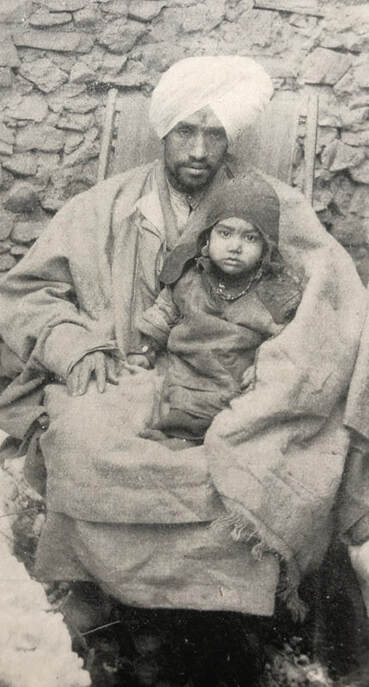 A school-going father from the early days, from E.D. Tyndale-Biscoe (1930), page 3 - by kind permission of Hugh Tyndale-Biscoe. A school-going father from the early days, from E.D. Tyndale-Biscoe (1930), page 3 - by kind permission of Hugh Tyndale-Biscoe.
This,
then, was the raw material that Biscoe was confronted with – he
variously called the boys “bundles” or “jelly fish” in his writings –
and he sought to convert them into “real men”, which in his language
meant men who would strive after “perfect manliness – strength of body,
strength of intellect, strength of soul - and … show that strength by
practical sympathy for the weak.” (C.E. Tyndale-Biscoe 1920:13). This
proved to be a long and arduous journey, but it did not deter Biscoe and
he remained steadfast in his goals and implemented changes in the
school in his own systematic, direct and inimitable manner, not devoid
of a certain British sense of humour. School timings became strict and
teachers and students had to adhere to them; the pheran was
replaced by a uniform of native trousers and coat; boys who arrived in
an unkempt state were given a good scrub in open view, and fined if they
repeated the offence.
Biscoe, never a particularly good student himself, was wary of the narrow limits of such learning as was available in books alone. What the boys needed, according to him, was a change of hearts and that could only be achieved through action and inculcating a spirit of service by practical example. For him education was only one part of the school curriculum, equally important were the development of physical strength and social service towards weaker members of society. Sports, including boxing, football, cricket, swimming and rowing were made a regular part of school activities, with inter-school competitions between the six CMS schools that opened in quick succession, and later with other schools, all of which also introduced sports as part of their regular activities. The annual regatta organised by the Biscoe school became an institution, and huge crowds started turning out on the riverbanks to watch the rowing and swimming events. For Biscoe, sporting activities were an important means for instilling fair play and team spirit in the boys. In addition, it built their physical strength and they learnt important skills such as rowing and self-defence which could be used for social service to help weaker members of society. 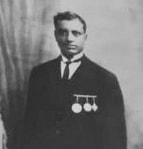
Tara Chand Wazir
(1893-1979) was born in an impoverished family in Srinagar, but by dint
of personal merit and the support of his older brother and mentors in
school and college, rose to become the first Kashmiri Chief Director of
the Sericulture Department (1942), and later the Director of Industries
(1948) for J & K State. He was made a Rai Bahadur in 1944, in
recognition for his services to the industrial development of the State,
but he returned the award in 1948, as he believed that a title received
from the colonial British government had no place in independent India.
Post retirement, he was actively involved in the Women’s Welfare Trust
set up by Dr. Annie Besant in 1928 for the welfare of Kashmiri women.
Consequently,
social service was made a regular part of school activities. In the
event of a fire, flood or epidemic, all recurrent events in the city,
the entire school - staff and students – with Biscoe at the head, would
turn out to help those in need, dousing fires and rescuing stranded
people. His insistence on teaching the boys how to row – he was after
all a Cambridge blue – was extremely handy during such events, and the
school would offer for free the services for which boatmen would extort
exorbitant sums in times of distress. During cholera epidemics, they
would get involved in cleaning drains and courtyards, advise the
residents on the need for hygiene and cleanliness, tend to the sick,
take patients by boat to the Mission hospital and escort them in, or
simply take the chronically ill for boat rides on the lake so they could
get some fresh air, without making any distinctions of religion, caste
or social standing. Saving animals from mistreatment by their masters – a
regular sight in a city where horses and donkeys were used for
transporting people and goods - was considered equally important and was
encouraged. This was a remarkable achievement in a society that was
riven by religious, caste and class hierarchies, and would be
unthinkable in some parts of India even now.
Biscoe did not shy away from tackling deeply entrenched social practices that would normally be considered outside the remit of a school. Boys who got married before the age of eighteen were charged double tuition fees, in an attempt to put an end to this custom. The school even took up thorny issues such as paedophile rings preying on schoolboys, pornography being peddled in the school and the city, and widow remarriage, going to the extent of organising marriages for widows and finding priests who would officiate at them. In fact the first remarriage of two young widows took place in May 1928 through the efforts of the school – the Brahmin priests who had agreed to perform the ceremony dropped out at the last minute, but the headmaster of the school, himself a Brahmin priest, stepped in and married them. This event was followed by relentless campaigning with the Maharajah to end this practice till he finally enacted a State Law permitting widows to remarry in 1933. Biscoe’s approach was innovative, pathbreaking and dramatic for the Srinagar of those times; he stamped his distinct identity on the Christian Mission School to the extent that it began to be referred to, and still is, as the ‘Biscoe’ school. Initially he faced a lot of opposition, from the Dogra state, from the parents, and also from the boys. The Pandits, of course, saw their caste status being defiled, and the Brahmin priests threatened excommunication for the ‘unholy work’ that the boys were undertaking. Both Hindu and Muslim parents were united in their dissatisfaction with the emphasis given to sports and social service. After all, they were sending their boys to school to get a certificate that would give them access to jobs in the government bureaucracy, and any distraction was a waste of their children’s precious time. Protests were organised, petitions were sent to the Maharajah, letters were written to the press complaining about the school and about the methods employed by Biscoe, and even anonymous letters were sent to the Resident threatening to kill Biscoe if he was not immediately expelled from the State. A petition, dated 1 April 1908, from the Hindus and Muslims of the city to “Members of the Mission Society” ends with the following, somewhat amusing, complaint: “Therefore, please, Sir, transfer Mr. Biscoe, for he is exceedingly a bad man, illiterate, deceitful, ill-mannered, uncultured, cunning, and man too much fond of cricket.” (C.E. Tyndale-Biscoe 1920:33). Opposition came from within the British and missionary community as well. In fact Biscoe was very nearly recalled from Srinagar on more than one occasion because “instead of preaching in the bazaar, I was filling my days out of school hours with all sorts of ‘goings-on’, calling out my boys in the night as well as in the day, to fight fires and above all teaching the school staff and boys to use their fists…” (C.E. Tyndale-Biscoe 1951:67). But he was always saved by a friend or a well-wisher who had visited the school and seen its impact on the students. In time, protests and opposition from all quarters came to an end; the school came to be recognised as a space free of caste and religious distinctions. Muslim boys started enrolling. The school’s activities were wholeheartedly supported and accepted, and henceforth sports, though not social service, became part of the mainstream curriculum followed by the few high schools and the undergraduate college that were subsequently set up by the Dogra state in response to the work of the missionaries and to the clamour among the population for more educational facilities. Growing up, I had of course heard about the school from my grandfather who would often talk about his student days, and he was prone to exclaim “I am a Biscoe boy” from time to time, as and when the situation demanded. I didn’t know much else about the school, apart from the fact that it still existed and had the reputation of being a ‘good’ boy’s school. By then, several other schools, including another missionary school for boys and a convent school for girls had opened in Srinagar, providing competition to the Biscoe school. It was only when I arrived in Cambridge in the 1970’s and chanced upon a book by Biscoe while browsing in an antiquarian shop that I began to understand the wider significance and influence of the school. Over the years I was able to add to this collection of old books and photographs about the school, and Kashmir in general. Biscoe appears to have been a man of contradictions. He was, of course, a missionary whose primary purpose in being in Kashmir was to convert the locals to the ways of Jesus. He believed fervently in this mission; in fact, he went to the extent of prophesying “…that Kashmir will one day be won for Christ” (T-B 1920:2). But he had a somewhat broader definition of Christianity. In his way of thinking it meant being a man who combined in himself the qualities of hard work, strength, kindness and service. He was a man of his times, a firm believer in Empire and the superiority of Western civilization, to the extent that he was a member of the India Defence League (Studdert-Kennedy 2004:857-858) but when asked by his European contemporaries if it was wise to train Kashmiri youth, lest they use their power against them, he would say: “My experience of life is that brave men respect brave men, to whatever country they may belong. It is of cowards that we must beware…If these Kashmir boys become true men, strong as well as kind, what have we to fear, if we too are men? We will grasp their hands as brothers.” (T-B 1920:21). At the same time, he had an abhorrence, developed at a young age, for the slave trade in Africa. In his autobiography, he writes: “When I was about six mother took my brother Ted and me to see our grandmother Tyndale at Oxford. On the table was a missionary box with a nigger boy on the top, standing with a broad-brimmed hat at his feet with a slit in it. Mother said that if we dropped a coin into the hat, the nigger boy would nod his head. So we dropped in a penny, and the little boy did as mother said. On our drive home we asked our mother about this little boy and she told us of the African slave trade. When Ted and I were in bed together that night, we promised each other that when we grew up we would go to Africa and set the niggers free. Ted did eventually join the navy, and when a midshipman, found himself off Zanzibar with the East Indian Fleet catching the slave dhows and setting the “niggers” free” (T-B 1951, p.21). The desire to fight the slave trade never left him and as a young student in Cambridge he would arrange meetings in his rooms to attract more crusaders to this cause. He offered his services to work in Africa when he joined the Christian Mission Society, but that was not to be. Because of his poor health he was sent to Kashmir instead, where he continued to preach against what he saw as the most evil of practices, but this time to the boys in the school. TCW was one of the young boys on whom these teachings made an impression. TCW’s own educational journey closely mirrors the unfolding of modern education in Kashmir. He commenced schooling, as did scores of other Pandit boys, in a pathshala run by a devout Brahmin. This must have been around 1897, I don’t know the exact date but have calculated it backwards from the date of his Matriculation in 1909. He spent only a short time in the pathshala and all he could remember of his days there was the absence of books, paper, ink, pens and other items of stationery. They were taught writing on a takhti (wooden tablet) on which letters were written with fingers or with thin reeds. Instruction was given in Sanskrit, of which he professed to remember not a single word. Within a very short period, a branch of the Biscoe school catering to primary school age boys opened near his house and he moved there. This happened by pure chance, on the recommendation of Asad Mir, whose family owned the building in which the school was accommodated, and who happened to be a friend of TCW’s older brother. TCW joined the Biscoe school in the lowest class, a sort of kindergarten, and in his passage from one class to the next, he came across some “stalwarts among the teachers of the school”, but the most impressive of them all, according to him, was the Principal Tyndale-Biscoe. TCW writes that he was mischievous throughout his school days: “Once I had failed to learn a lesson or perform a home task in Persian and the teacher Hari Kak prescribed the most cruel punishment, cruel by any standard as prevailing then or now, namely, a lashing with Suya (stinging nettle) all over the body. In fact I was made to lie for some minutes in an encasing of Suya plant till the whole of my skin was red with pimples and then in that month of mid-winter I was taken to the river nearby where I was given few dips in freezing water to mollify the pimples. Whether the pimples were mollified or not I cannot tell, but I am sure that I escaped death by a narrow margin and this through nothing short of a miracle. My people at home when they heard of this cruelty were greatly upset. They thought of protesting to the principal; they even thought of withdrawing me from the school. But neither the one nor the other proposal matured … I am sure if Biscoe had been apprised of the fact, he would have given the sack to the Persian teacher which he richly deserved.” [4] How different these brutal methods of disciplining children were from the one’s Biscoe used! “Biscoe himself once caught me in his Bible class when I reached the highest rung of the ladder in the school, i.e. fifth primary. A strict disciplinarian that he was, though equally regardful and affectionate towards his pupils, he found me laughing while he was haranguing us on some serious subject. But then he was Biscoe and nothing if not original in everything. The punishment he prescribed was of a novel kind, at least it struck me as such at that time. He brought a sheet of paper and wrote the words ‘LAUGHING MONKEY’ on it and tied it on the back of my coat and had me taken round all the classes. This punishment was more telling than a dozen lashing of a suya plant and dips in freezing waters of Jhelum could possibly be. But even this failed to deter me for shortly after I was promoted to first middle class and was shifted to the central high school at Fateh Kadal. I repeated the offence in Biscoe’s class and he was justifiably upset about the repetition of the offence and this time had me taken up with the same board of ‘laughing monkey’ on my back to the topmost ladder in the gymnastic compound and was left there in the full gaze of the school students who pointed the finger of scorn towards me. Now, at this distance of time, I find it difficult to explain why I got those laughing fits in season and out of season which earned for me the punishment I richly deserved … One thing however is certain that this was the end of the delinquency on my part.” There were several aspects of the education that TCW received in Biscoe School that left an everlasting mark on him, and none of them had anything to do with the academic side of learning. “One of the most unforgettable experiences I had in my high school days related to the annual day functions of the school and the way they were celebrated under personal instructions of Tyndale-Biscoe. The programme he chalked out for such occasions, all emanating from his fertile brain, unmistakably stamped him out as an educationist in the real sense of the term. True to the motto of this school ‘In All Things Be Men’, he first of all wished the students to be physically strong. For this he arranged … PT games of all kinds such as, horizontal and parallel bars, ladders and jhulas (swings), high and long jumps, drills with bars and clubs. This is to say nothing of aquatic sports, jumps in different positions from the roof of the school building into the river, swimming and boating competitions, which formed a source of attraction for most of the people in the city who came out and watched the scene, so unusual and unlike what they were accustomed to seeing. Other schools followed the lead of Biscoe School later on.”
The
ability to swim and row, so necessary, but sadly lacking, in a city
built around a river, where the main means of transport around the city
and to other parts of the State was by boat, and where floods were a
regular part of life causing deaths and damage, was taken very seriously
by Tyndale-Biscoe. All boys had to pass the swimming examination or
risk paying double tuition fees, as TCW was forced to do:
“To avoid this penalty we had to learn swimming and pass a test held under the auspices of the school…From Gagribal point to the end of a nullah towards Rainawari we had to swim independently, if the enterprise were successful we were given a certificate, production of which would exempt us from the payment of the double fee. I had learnt swimming indifferently, so when I came in for the test, I collapsed halfway, but then the rescue arrangements consisting of boats and expert swimmers accompanying the examinees on trial were ideal and the experts at once picked me up. I had to wait for a year to renew the test and on the second attempt I was successful. I do not know if one of the main reasons for my good health did not lie in the physical training which I received in Biscoe’s school.” One school event that TCW often talked about with great excitement was Biscoe’s brilliant idea of giving visiting dignitaries a ‘human’ welcome, as he used to call it. I didn’t quite believe this, maybe because I couldn’t visualise how it was done, until I chanced across a photograph of one such welcome in a book by Biscoe (1951:153). My excitement at finding photographic ‘evidence’ of what I had always thought of as a fanciful story was tempered by the fact that my grandfather had passed away a few years before and I could not share my find with him, nor could I ask him if he had been part of the welcome. I know now that he couldn't have been, as this 'living welcome' was staged only twice, both times after TCW had left school. Biscoe (1951) gives an account of organizing the first such welcome for the visit of the Viceroy of India, Lord Hardinge, and his wife to Kashmir in 1912: “P.W.D. officers very kindly lent me a wire hawser…We anchored one end in the school compound and brought it over the roof of the school building, then across the river and fixed it to a tall tree on the opposite bank. On this hawser we hung the letters WELCOME, made of bamboos on which sixteen boys were to take their place, the boys being dressed in the colours of the Union Jack. This ‘living welcome’ was to hang thirty feet above the water …. Lord Hardinge told me afterwards that when he first saw the ‘welcome’ he thought that the letters were made of bunting, but just before the state barge reached it, I blew a whistle and immediately the ‘letters’ plunged into the river and swam ashore. Lord Hardinge doffed his cocked hat and cheered the boys.” (T-B 1951, p 151).
That
the school provided a well-rounded education to the youth of Kashmir is
obvious from TCW’s description of the awards handed out during the
Annual Day functions.:
“The annual day function was almost invariably presided over by the Resident in Kashmir or some high dignitaries from British India, whose honoured wife, if present, gave away the prizes, medals, trophies and other decorations to winning individuals and teams. Academic distinctions i.e. proficiency in studies, though they had their rightful place in such awards, what was noteworthy was the large number of the prizes awarded for proficiency in games, ground as well as aquatic, and for social service such as cleanliness, saving lives in fire and drowning etc., helping the weak and the indigent and so on.” "The Annual Day was held generally in the central school, but sometimes also outside. One of the most noteworthy of such functions outside was the one held in my school days at Gagribal point in Dal lake, where a most interesting demonstration was given of the slave trade which flourished in those days in African colonies and did not fail to contaminate the source of Colonialism and to bring about a revulsion of feelings against it in the public’s mind. Biscoe’s show was a most telling condemnation of the social evil as it prevailed in those days. I am not sure if Biscoe’s voice against the evil as demonstrated in the show was not as strong as that of any other individual here in this tiny state or elsewhere in the world. For myself it was a lesson which I could not forget in life, i.e., the bane of degrading life by enslaving it.” An amusing and telling vignette that TCW paints is about the importance of passing examinations, illustrating Biscoe’s own sentiments when he says, “Before I came to this country I thought examinations most uninteresting, but here I find them full of interest and humour” (T-B, 1920:32). He was, of course, referring to the wide-scale cheating that was endemic, but also to the huge amount of fuss around the event. TCW recalls: “The last recollection of school days relates to our Matriculation examination 1909. There was only one examination centre and that was the Sri Pratap College hall ... One should have seen the furore that there was in the college compound when the examinees came out for the intervals between the two meetings, morning and afternoon. Friends, relatives, Susralwalas, and all had come with sweets, baked mutton, cooked koftas, rogni roti and all that to regale their heroes with, for they were regarded in those days nothing short of heroes, little Caesers and Napoleons, though the countries they conquered were only some little books of indifferent merit which were prescribed as the course for the Matriculation by Punjab University to which the educational institutions in the state were affiliated. One should have also witnessed the tension which existed in our minds when the result was about to be announced. We were asked to collect it at the vice principal Mr Lucey’s residence in Sheikh Bag, made to stand in a row and then the result was announced one by one. When the time came for my name, so tense was the excitement that I thought that my heart would cease beating. Once the magic word “pass” came out of Lucey’s mouth, I jumped with joy and ran to announce this heart-elevating news to my kith and kin who were gathered in large numbers outside the premises. Jubilations and felicitations continued at home for several days which almost made us feel that we were made of some other clay than which goes in the composition of common mortals.” TCW didn’t distinguish himself in school – he was an average student and an average athlete. “For myself, I never had a distinction of ever winning a prize or distinction in school days. The nearest I came to it was when I succeeded in getting the much prized remark “Fair” on my English composition from Mr. Lucey, the vice principal who, himself a great scholar, somewhat of a taciturn temperament was very chary of giving any high complimentary remarks such as, “Good” or “Very good”, to say nothing of “Excellent” to any student on his home or class work, at least in my class.” Academic achievement and plaudits came later when he stood first in J & K State in B.A History honours, and passed the M.A. History examination with a Distinction, earning him a place in the Roll of Honour in Government College, Lahore. But Biscoe must have recognised some talents and qualities in TCW because he became a well-wisher, friend and mentor for life and helped him later on in all manner of ways, such as in assisting him to secure an exemption from the payment of tuition fees once he passed out of school and joined the local college. “The exemption was secured by denoting my father’s salary in the police department as a very small amount “plus loot” in his own inimitable style of describing the truth. The plea did the trick all right. On my part I recompensed him for his affectionate regard by taking pride in calling myself a ‘Biscoe boy’ and trying to deserve the name as it was a synonym for the brave and straightforward alumni of C.M.S School.” Much later, in 1944, Biscoe wrote him a personal letter of encouragement and appreciation when he resigned from government service over a matter of principle. On his return from his near-drowning adventure in Djibouti, Biscoe invited him to a function at his house to meet the staff and senior students of the school to tell them of his experiences on the continent, as he was the first among the Biscoe boys to go overseas and return. “It was altogether a pleasant evening I spent with my friends of CMS and when I related the story about my drowning off the African coast they felt proud of the alma mater which taught us the art of swimming, paddling and social service in emergencies when danger to life was all too imminent” Biscoe dedicated a life-time of service to the cause of education in Kashmir, spending the best part of 60 years in Srinagar. He uprooted himself reluctantly from the State in 1947, soon after India became independent, but only because he was advised that his presence might cause difficulties for the new Principal. He moved to Rhodesia, where he passed away eighteen months later at the age of 86. During his brief stay there, he worked on his autobiography and remained in touch with his trusted staff, offering them advice and encouragement. Each of his letters ended with the words, “My body is in Africa but my soul is in Kashmir” (H T-B: 2019:292). At the time of his departure, there were six CMS schools for boys and the first school for girls, the Mallinson School, which was started in 1912. [5] After 1947, at least four Chief Ministers and several government ministers and senior bureaucrats were alumni of the Biscoe school. The six schools underwent several upheavals and reversals of fortune in the decades that followed; at the present moment there is a functioning Biscoe School for boys and a Mallinson’s School for girls in Srinagar. It was my intention to visit the Biscoe School and see if it still adheres to, or has appropriately reinvented, some of the features that made it unique, but this visit will now have to wait for better times. Reverend Tyndale-Biscoe’s record of converting Kashmiris to Christianity, as well his bosses at the Christian Mission Society might have wished, was not impressive, but he did succeed in mass conversions in the hearts and minds of the boys in his charge, by moulding them into well-rounded, strong and honest citizens, with a desire to help the weak, poor and oppressed – men and women, humans as well as animals - in effect converting them to his version of Christianity. TCW was one of these ‘Biscoe’ boys and this is the story of the school through his eyes. There must be countless others who were similarly influenced. TCW never lost his boundless enthusiasm and affection for his alma mater and credited the school with shaping his character, instilling a long-lasting love of sports, and indeed making him the person that he was – upright, honest, imbued with a spirit of service and respect for all men and religions. His honesty was legendary, and it was said about him that he would not even accept a bouquet of flowers as a gift in his professional capacity. He believed in the power of education and was proud of his association with the Vasanta and Kashyapa High Schools for Girls that were run by the Women’s Welfare Trust in Srinagar. Given his impoverished family background, it would be no exaggeration to say that that had it not been for the education that he received in the school, and the support he received from Biscoe later, he might not have been in a position to pursue a university education, leading to an illustrious career in the civil service, where he rose to be the first Kashmiri head of a government department and was made Rai Bahadur for his services, a title that he returned to the State after India became independent. Tara Chand Wazir was his own man. His profound appreciation for Biscoe and his love for his alma mater did not prevent him from being anti-colonial in his intellectual and political stance. He was also deeply troubled by the proselytizing mission, though he did acknowledge that he had benefited from Biscoe’s sermons on the life of Christ, just as he did from his exposure to and study of other religions. He was a diehard supporter of Gandhi and Nehru, an admirer of Annie Besant and a member of the Theosophical Society. Let me return to the beginning: TCW’s pithy remark about the ‘Biscoeism’ in his blood asserting itself off the coast of Djibouti,12 years after he had passed out of school, says it all. “Once a Biscoe boy, always a Biscoe boy” was a mantra that he repeated throughout his life. [1] I have extracted my grandfather’s account of the incident, as well as of his years at the Biscoe School and the impact it had on him, from his unpublished memoirs (Wazir 1970). [2] To illustrate his point, Biscoe (1920:75-6) provides the example of the father of one his students, who earns twenty rupees per month as a clerk in a government office. His office is 32 miles away, so he has to maintain two establishments, his own (costing nearly twenty rupees), and that of his family in Srinagar (also costing about the same). In addition, he employs two clerks to help him do his work at a salary of 7-8 rupees. These two clerks can also not survive on their pay alone, and so on. [3] Fortunately, Biscoe wrote extensively about his experiences in Kashmir, leaving us with a rich source of background information, anecdotes, and insights into his unique methods as an educationist. His son Eric Tyndale-Biscoe, who worked at the school in various capacities, including as the Principal, has also written the story of the school. Most recently his grandson, Hugh Tyndale-Biscoe (2019), himself a student at the school, has added to this resource by bringing the narrative up to date, adding invaluable information from archival sources and providing a more nuanced, complex and personal perspective on the school that takes his grandfather’s name. [4] Dunking children in the ice-cold waters of the Jhelum in mid-winter is probably a step too far but caning with stinging nettle was a standard punishment in certain institutions, even in the fifties and sixties when I was in school in Srinagar, though thankfully not in mine, and is perhaps still practiced. [5] No doubt there is a story to be told about Muriel Mallinson and role of the Mallinson School for Girls in educating a generation of Kashmiri women who then went on to occupy prominent positions in Kashmir, but that is for someone else to narrate.
References
Khan, Mohammad Ishaq, (1978), History of Srinagar 1847-1947: A Study in Socio-Cultural Change, Srinagar, Aamir Publications. Moorcroft, William & George Trebeck, Travels in the Himalayan Provinces of Hindustan and the Punjab, in Ladakh and Kashmir, 2 vols, London 1841. Studdert-Kennedy, Gerald, 'Cecil Earle Tyndale-Biscoe' in H.C.G. Mathew and Brian Harrison ed. (2004), Oxford Dictionary of National Biography, Oxford: Oxford University Press, Vol. 5. Temple, Richard (1887), Journals kept in Hyderabad, Kashmir, Sikkim and Nepal, vol. II., London: W.H. Allan & Co., edited by his son Richard Carnac Temple. Tyndale-Biscoe, C.E., (1920), Character Building in Kashmir, London: Church Missionary Society. Tyndale-Biscoe, C.E. (1925), Kashmir in Sunlight and Shade, London: Seeley, Service & Co. Limited. Tyndale-Biscoe, C.E., (1951), Tyndale-Biscoe of Kashmir: An Autobiography, London: Seeley, Service & Co. Limited. Tyndale-Biscoe, E.D. (1930), 50 Years Against the Stream: The Story of a School in Kashmir 1880-1930, Mysore, Wesleyan Mission Press. Tyndale-Biscoe, Hugh (2019), The Missionary and the Maharajas: Cecil Tyndale-Biscoe and the Making of Modern Kashmir, London, I.B. Tauris. Wazir,T.C, (1970), 'My Life Story, the Lessons it has Taught me – 77 Years in Retrospect', Unpublished. 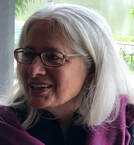
Rekha Wazir is the Co-Founder, Co-Director (1994-2007)
and currently Senior Associate of International Child Development Initiatives, Leiden, The Netherlands. She is the granddaughter of Tara Chand Wazir. |
KashmirConnected
a site about the modern history of Kashmir
Archives
December 2019
October 2019 August 2019 September 2018 January 2018 August 2017 July 2017 September 2016 May 2016 April 2016 March 2016 January 2015 October 2014 September 2014 Categories
All
Achala Sachdev Agha Shahid Ali A.G. Noorani Amina Mahmood Mir Andrew Whitehead Article 370 Balraj Puri Chitralekha Zutshi Donnabelle Garga Jawaharlal Nehru John Keay Kanta Wazir Lalla Rookh Mahatta's Meenu Gaur Mehbooba Mufti Nedou's Hotel Nirupama Rao Orientalism Quit Kashmir Rajani Palme Dutt Reeta Tremblay Rekha Wazir Sheikh Abdullah Storm Over Kashmir Tara Chand Wazir Thomas Moore Trifurcation Tyndale-Biscoe Women's Militia WSDC |
Proudly powered by Weebly
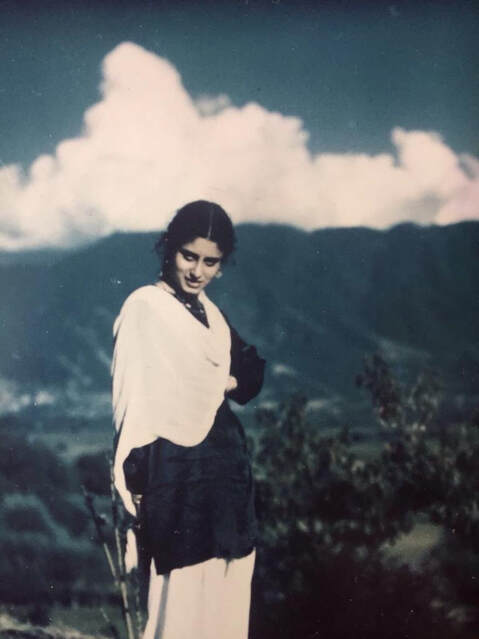
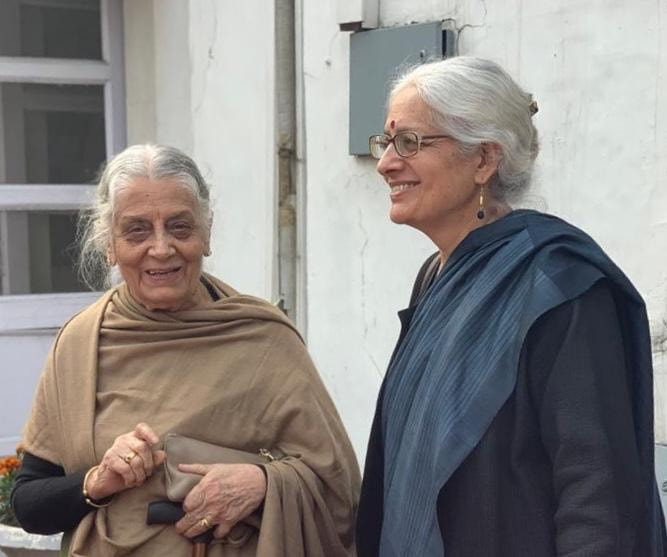
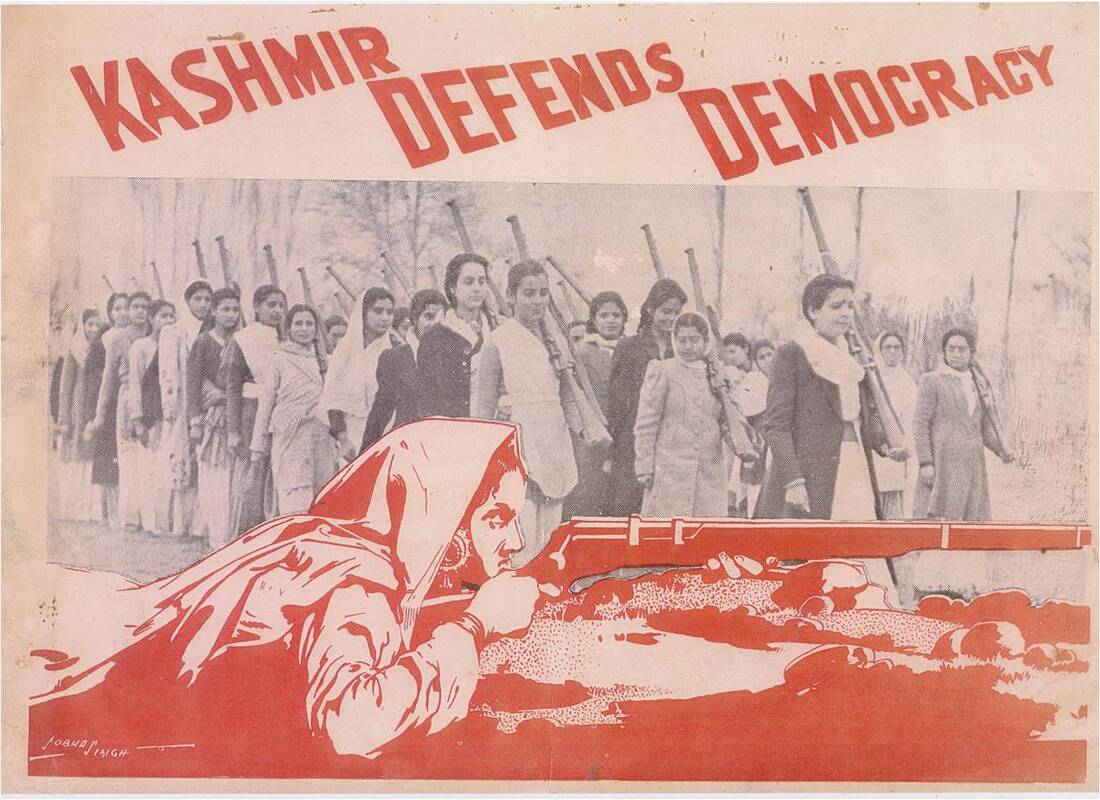
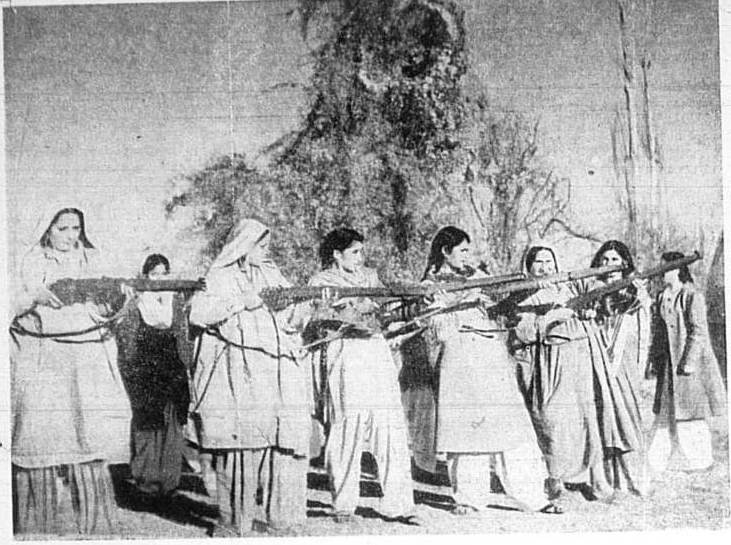
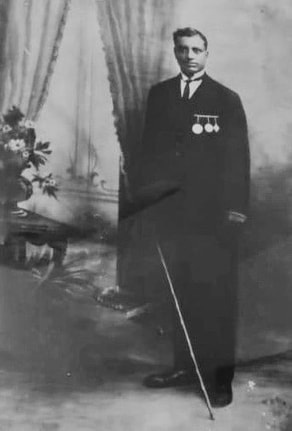
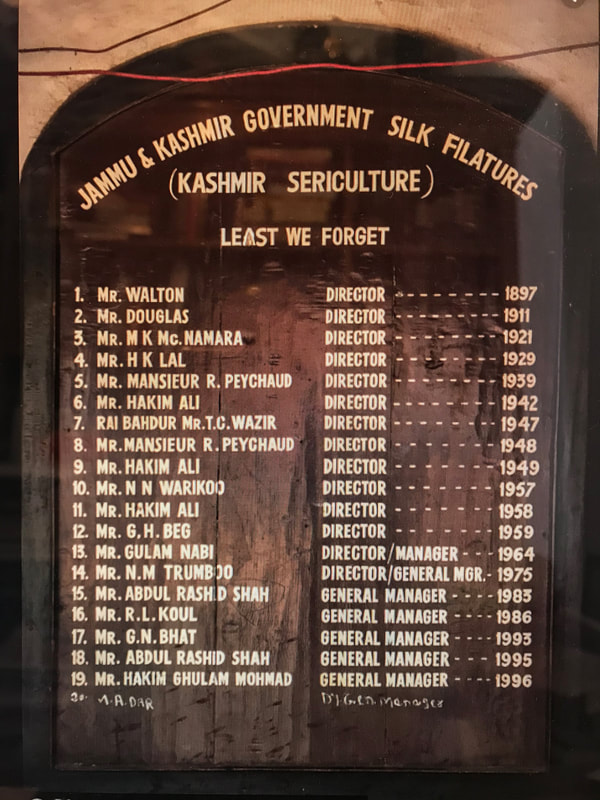
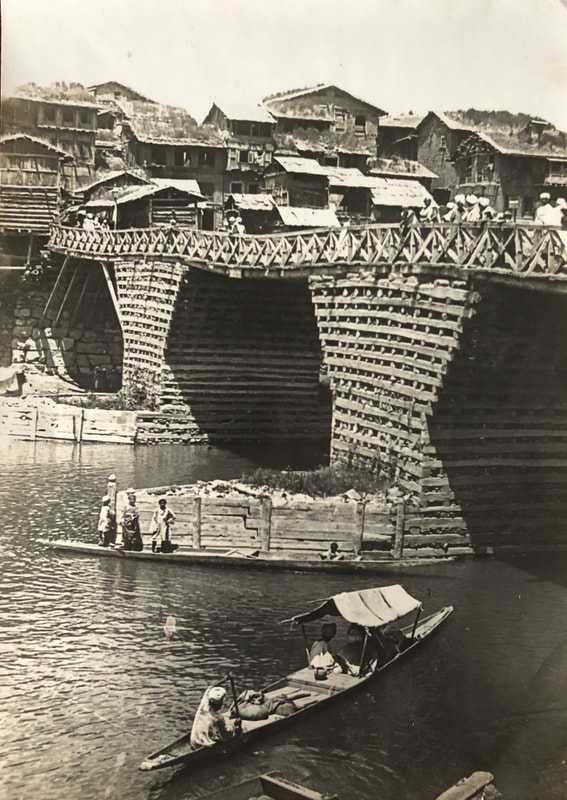
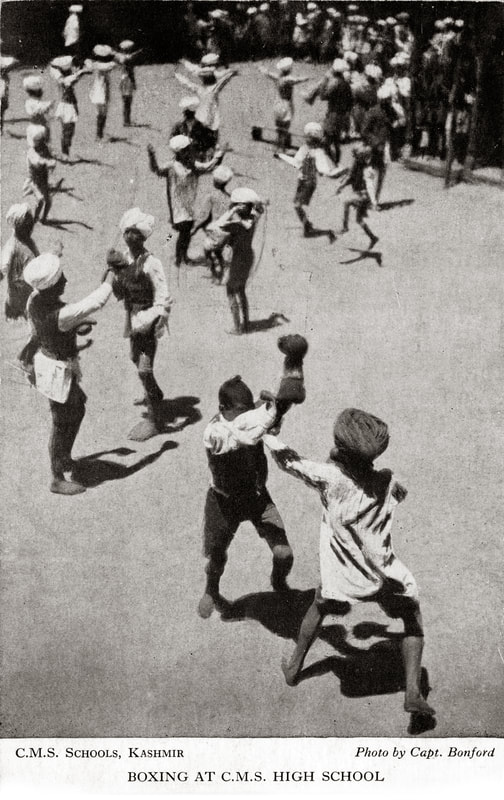
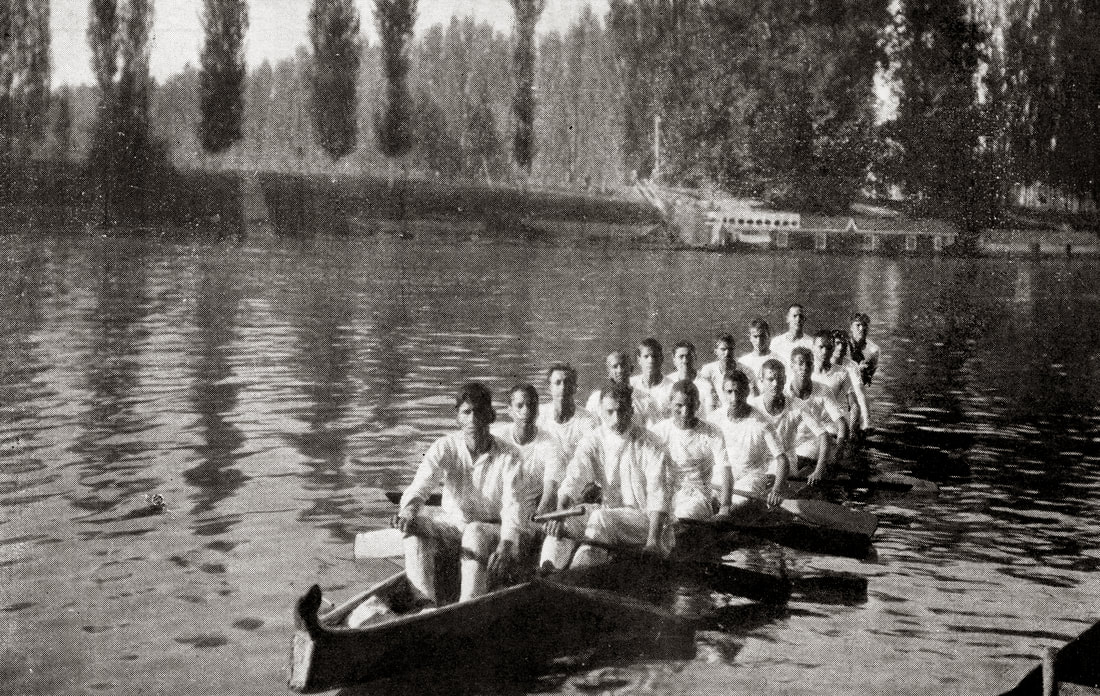
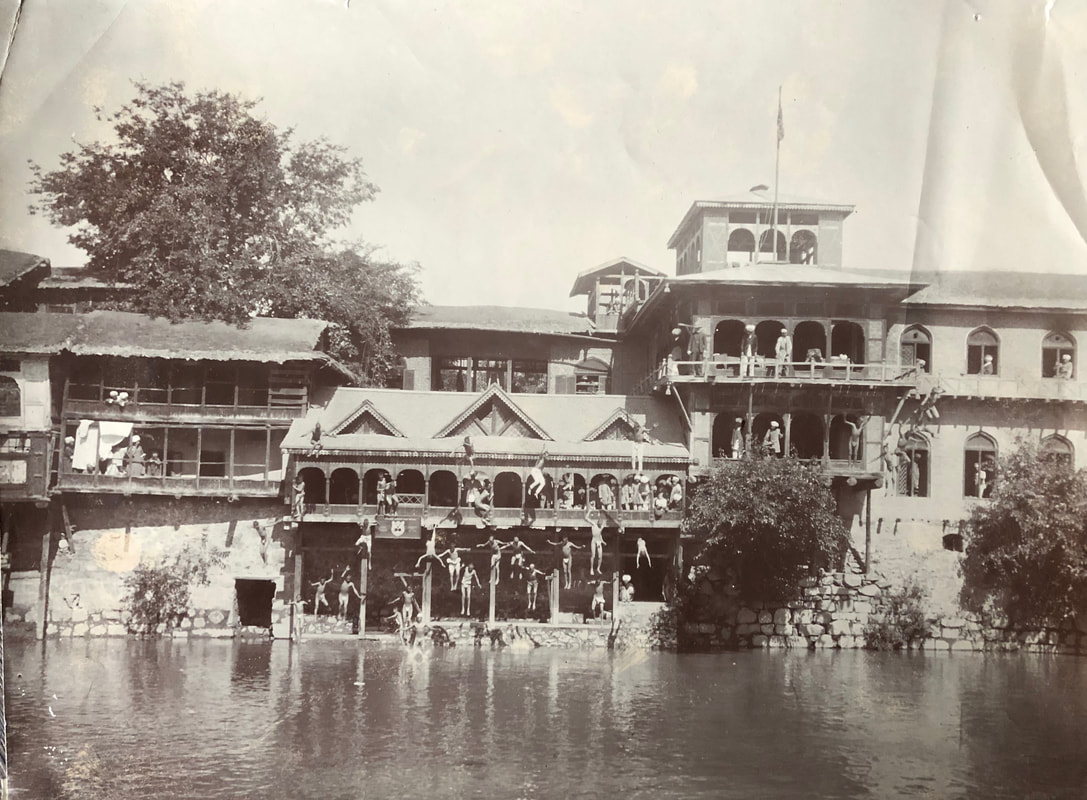
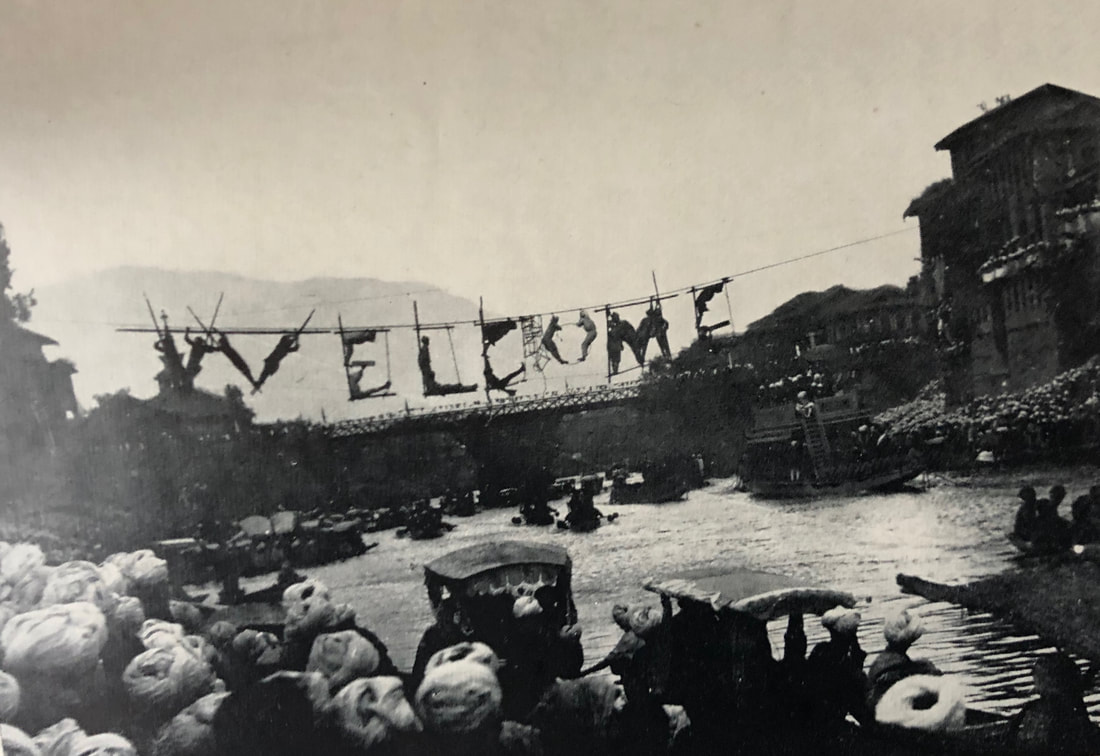
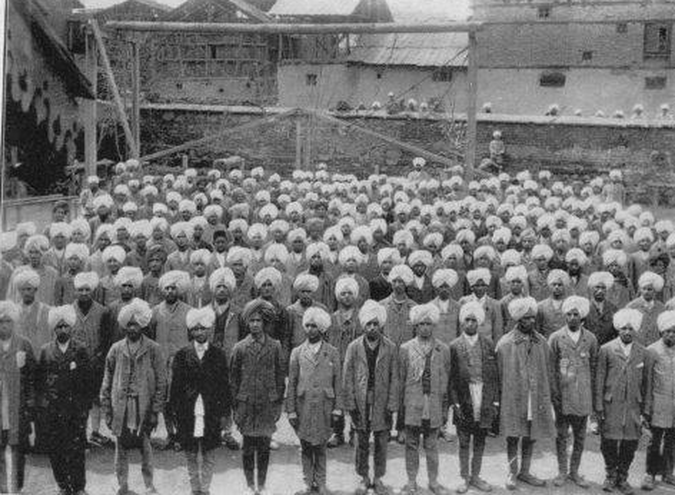
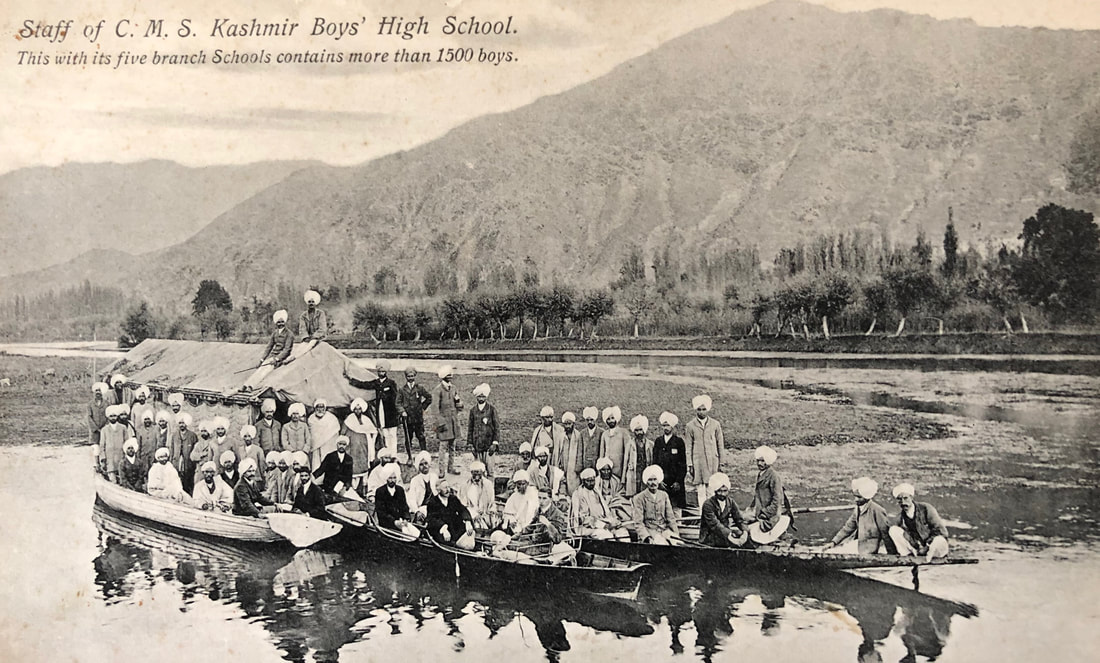
 RSS Feed
RSS Feed











